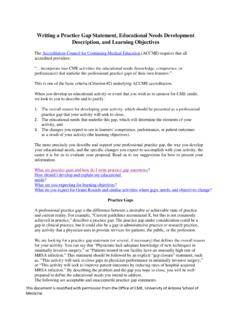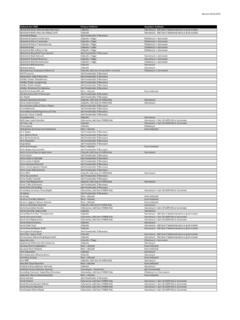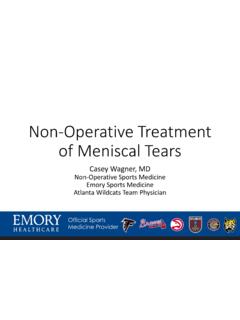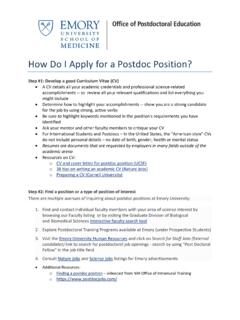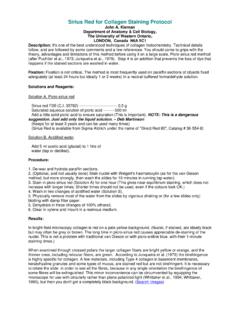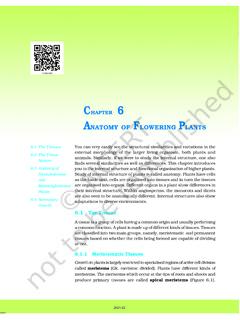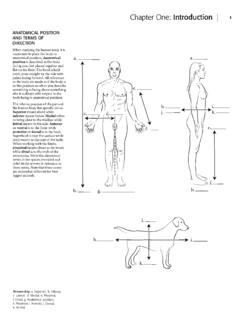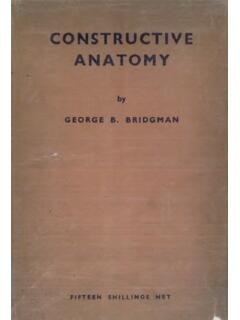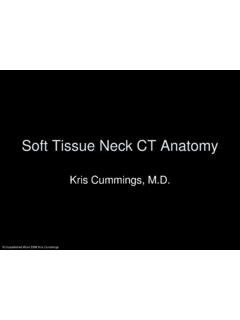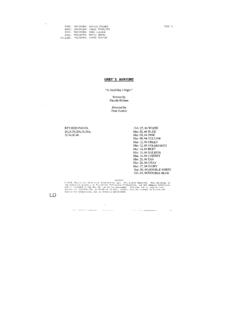Transcription of Toes: Anatomy, Pathology and Common Surgical Procedures
1 Toes: anatomy , Pathology and Common Surgical Procedures Adam Singer, MD1; Jason Bariteau, MD2; Yara Younan, MD1; Walter Carpenter, MD1. Jean Jose, MD3; Ty Subhawong, MD3; Monica Umpierrez, MD1. 1 Emory University Hospital, Department of Radiology Section of Musculoskeletal Imaging, USA. 2 Emory University Hospital, Department of Orthopedic Surgery, USA. 3 University of Miami, Department of Radiology Section of Musculoskeletal Imaging, USA. Learning Objectives 1. Osseous and soft tissue toe anatomy a. The great toe b. The lesser toes 2.
2 Pathophysiology and clinical presentation of injury to great and lesser toes a. Hallux valgus, varus and rigidus b. Bunion and bunionette c. Hallux sesamoid complex injury and turf toe d. Hammer , claw and mallet toe e. Freiberg infraction f. Neuroma g. Benign masses a. Subungal exostosis b. Plantar fibroma 3. Commonly encountered Surgical Procedures Authors have no conflict of interest. Osseous and Soft Tissue anatomy Overview Joint Muscle belly 2nd DIP. Tendon 2nd PIP 1st IP. Osseous structure Dorsal Interosseous Dorsal Interosseous Plantar Interosseous Medial Collateral Ligament Complex Medial Collateral Ligament Complex Lateral Collateral MS.
3 Ligament Complex Adductor Hallucis FDL LS FHL. 1st MTP 1st MTP. Lumbricals Abductor Hallucis FHB. FHB. Plantar FHB FHB. Interosseous FDB. FDB. Osseous and Soft Tissue anatomy : The Great Toe Joint Ligament EHL. Tendon Proximal Intersesamoidal ligament Osseous structure 1st MT. Proximal phalanx Hallux Sesamoid articular complex Adductor Hallucis EHL FHL Abductor Hallucis Distal Crista Medial head flexor hallucis brevis (tendon). Hallux Sesamoid Medial sesamoid Medial sesamoid articular complex phalangeal ligament Adductor Hallucis Abductor Hallucis FHL.
4 Osseous and Soft Tissue anatomy : The Lesser Toes Extensor digitorum longus and extensor apparatus to the second toe Joint FDL to the second toe Ligament 2nd MTP Joint Tendon Osseous structure Plantar plate with degenerative signal, but no tear Plantar plate, completely black ligamentous/capsular thickening which resists hyperextension of the MTP. Transverse (inter)metatarsal ligament (beneath which is a 3rd webspace Morton's neuroma Flexor digitorum brevis (yellow) originates Extensor digitorum brevis (yellow). in plantar foot and tendon splits at the originates in lateral foot and tendon joins proximal phalanx to then insert on the extensor apparatus.)
5 Central slip inserts middle phalanx allowing for PIP flexion. into middle phalanx to allow for PIP. The flexor digitorum profundus tendon extension while terminal tendon passes passes between the FDB slips and around central slip to insert on distal continues to insert into the distal phalanx phalanx and allow for DIP extension. to allow for DIP flexion. There is no EDB to 5th toe. Pathophysiology: Hallux Valgus, Varus and Rigidus Common hallux radiographic measurements Hallux valgus interphalangeus angle - Angle between long axes of distal and proximal phalanges - Angle at IP joint - Normal < 8 degrees Hallux valgus angle - Angle between long axes of proximal phalanx and 1st MT.
6 - Angle at MTP joint - Normal < 15 degrees Metatarsus primus varus angle - Angle between 1st MT and 1st cuneiform - Angle at 1st TMT joint - Normal 10 - 25 degrees 1st intermetatarsal angle - Angle between 1st MT and 2nd MT. - Normal < 10 degrees Distal metatarsal articular angle (DMAA). - Angle between 1st MT shaft and line through base of articular cap - Normal < 10 degrees - Tells if there is incongruency of joint Pathophysiology: Hallux Valgus, Varus and Rigidus Hallux valgus (lateral deviation of toe relative to 1st MT). - May be associated with RA, cerebral palsy, following a second toe amputation, family history, with pes planus or, more commonly when chronically wearing high healed shoes with a narrow toe box - Complex pathophysiology: - Proximal phalanx moves in valgus direction while 1st metatarsal moves in a varus direction - Adductor hallucis attaches to lateral sesamoid and pulls the sesamoids laterally.
7 Also, sesamoids attached to deep transverse intermetatarsal ligament which keeps sesamoids stable relative to medially deviating 1st MT. - EHL and FHL shifts laterally which pulls the distal toe in a lateral direction, worsening deformity - Medial capsule side of the 1st MTP joint is stretched while lateral side is scarred/contracted - Further varus positioning of the 1st MT head brings it closer to inside of narrow toe box resulting in increased pressure on the medial 1st MT head and superficial soft tissues - Valgus movement of toe may result in first and second toe cross over FHL and - Abductor hallucis rotates in a plantar and lateral direction resulting in great toe pronation EHL.
8 - Remodeling of the medial eminence of the 1st MT results in bunion with or without adventitial bursitis tendons pull distal toe laterally EHL EHL. Medial Normal at Lateral Medial Lateral Hallux Transverse and oblique heads of adductor hallucis Sesamoid along with deep intermetatarsal ligament allow for Complex medial subluxation of the 1st MT head from the sesamoids resulting in their progressive uncovering Ses-M Ses-L (lateral sesamoid uncovered first). Pathophysiology: Hallux Valgus, Varus and Rigidus Sesamoid phalangeal ligaments Abductor hallucis MS LS.
9 MS LS. FHB. MS. FHL. Normal Medial MTP Capsule Lateral MTP Capsule Intersesamoidal ligaments and plantar plate FHL. Soft tissue prominence along medial side of 1st metatarsal head Hallux Valgus - Phalanges deviate laterally - Stretching of the medial 1st MTP joint capsule MS - Adductor hallucis and IML holds sesamoids lateral with LS. respect to 1st MT (green arrows). - FHL (blue line) deviates laterally contributing to further valgus deviation of the phalanges - 1st metatarsal head deviates medially MS LS - Soft tissue prominence at bone remodeling result at the FHL medial 1st metatarsal head (bunion).
10 1st metatarsal pronation - Pull of the abductor hallucis results in great toe pronation (curved orange arrow). Pathophysiology: Hallux Valgus, Varus and Rigidus Hallux varus (medial deviation of the toe relative to the 1st MT). - Often associated with overcorrection of hallux valgus, but can be seen in inflammatory and neuropathic arthritis - Pathophysiology related to excessive Surgical correction of hallux valgus: - Excessive medial eminence resection with overtightening of the medial capsule with release of medial capsule pulls the proximal phalanx medial with respect to the 1st MT.
